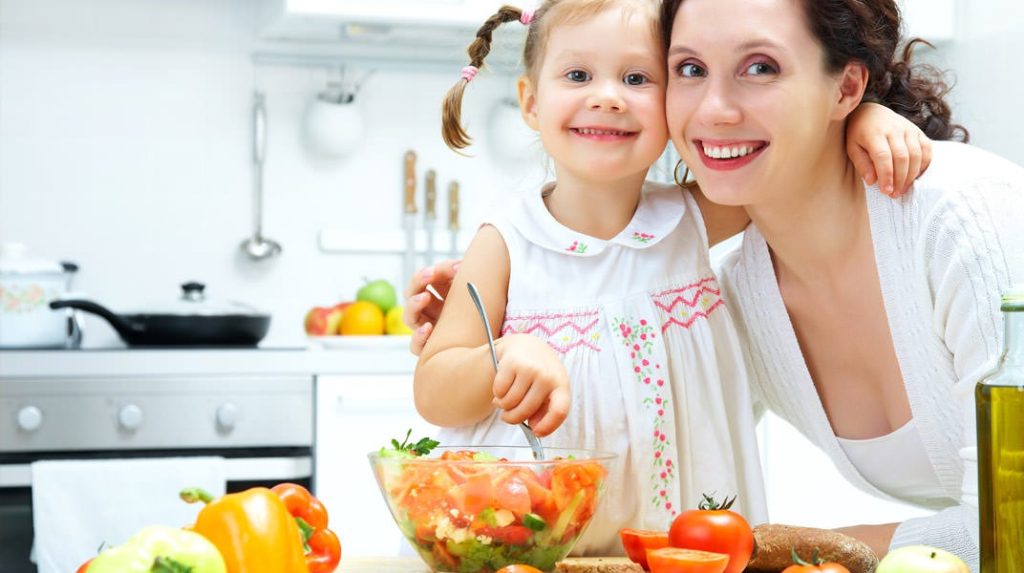Healthy eating for children
April 28, 2022

Eating the right amount
Food and drink portion sizes in supermarkets and restaurants have increased in recent years, and there’s evidence that we’re also eating bigger servings at home too – this may be contributing to the rise in being overweight and even obesity among young children.
But how much food do young children actually need? There’s very little guidance available, so parents and carers often have to rely on their own judgement.
Some parents say that their child simply stops eating when they’ve had enough, while others find their little one will carry on eating and eating until they’re told to stop.
All children are different and your child may need different amounts of food depending on how they’re feeling or what they’ve been doing on a particular day – for example, a child who’s been running around will need more food than one who isn’t feeling very well.
Helping children understand when they feel full
What’s really important is to help children recognise what it feels like when they’re hungry, and, more importantly, when they’re full.
There’s some evidence that very young children (under 2 years) will eat what they need and no more – whatever portion size they’ve been given – whereas older children might eat more than they need if they’re given a bigger helping.
It seems as if the older children get, the less they’re able to tell if they’ve had enough food or not. Making a child finish everything on their plate, or allowing them to ‘graze’ on food all day seems to make matters worse.
There are a number of things parents and carers can do to help children pay attention to their feelings of fullness and hunger:
- Encourage your child to eat slowly. It can take our brains a while to register what we’ve eaten, so if you’re having more than one course, leave a break before offering pudding.
- Have regular meals at set times and allow two or three snacks between meals rather than having food available all day.
- Never make your child finish everything on their plate – it may make them uncomfortably full and put them off food in future. Some researchers have found that children will eat the right amount if they are allowed to serve themselves – although that may need some supervision for little ones!
- Remember that children’s stomachs are smaller than adults (and younger children’s are smaller than their older siblings), so don’t expect the whole family to eat the same amount.
The best plan is for the parent or carer to decide the ‘what’, ‘where’ and ‘when’ of food, and for the child to determine ‘how much’. If there’s a choice of healthy foods on offer, most children won’t overeat.
Making healthy choices and exploring new foods
Children are more likely to try new foods if they’re part of the preparation process – involve your child in helping with meals and make them feel that their contribution is valuable – choosing ingredients, helping to cook, laying the table and even washing the dishes can all be fun for little ones.
Similarly, helping children to feel as if they’re ‘in charge’ of their own meal is a great way to encourage them to be adventurous and try out new foods – providing them with things to scatter, sprinkle or add to their plate gives children a sense of control over their food.
Sitting down together around the table is a great opportunity to talk about what you’re eating, and discuss how things taste. Even if you’re just preparing your child’s lunch box, you can still help them to make healthy choices.
Ideally, a lunch box should contain a source of starch and protein, a piece of fruit and a drink – but you can get as creative as you like. Try wraps or a slice of quiche or pizza instead of a sandwich, or branch out with pasta, couscous or rice salad. Cut up fruit, offer an easy-to-eat portion of grapes, or cut up carrot, pepper or cucumber sticks with a favourite dip.